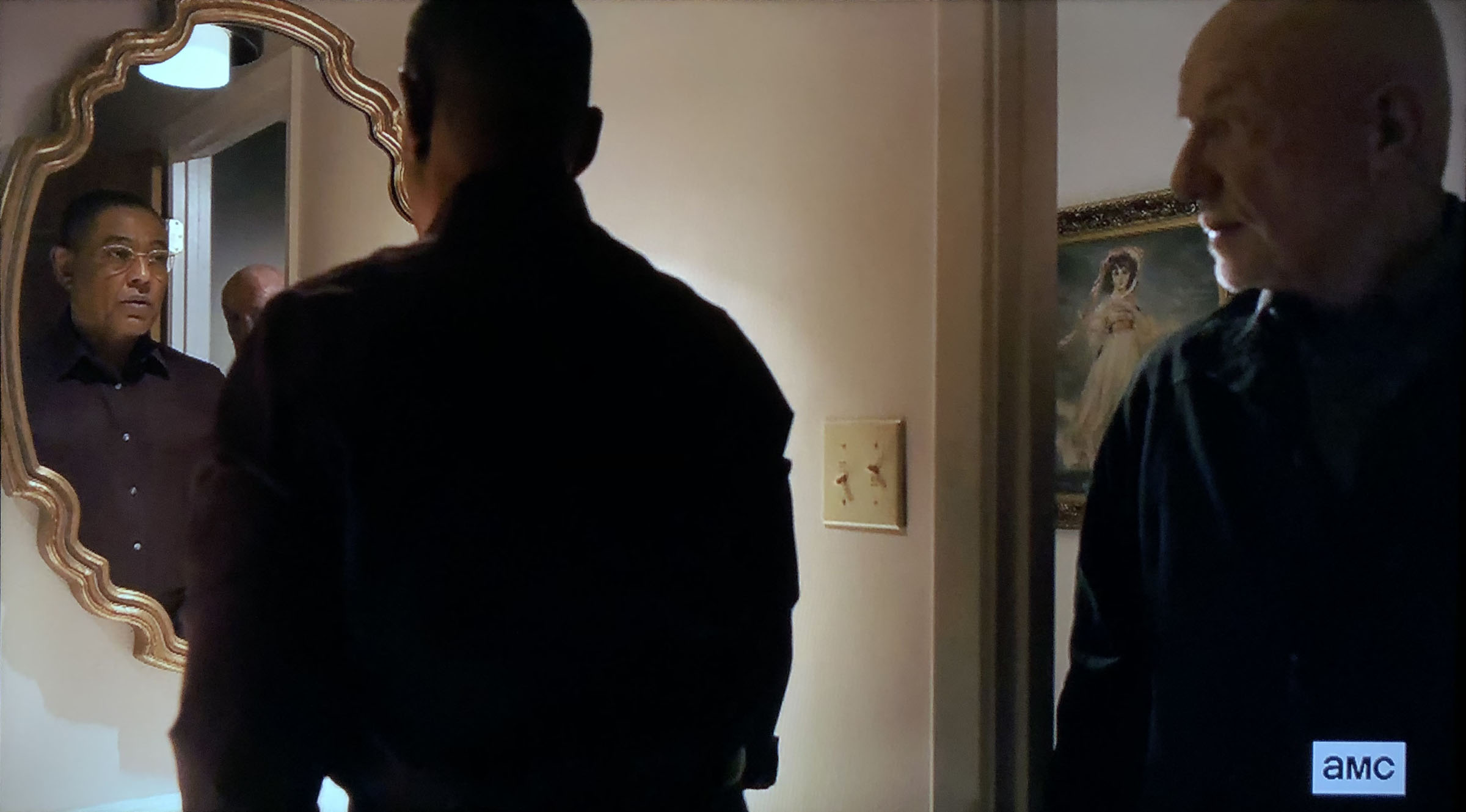Pinkie is "Better Call Saul" Easter Egg
 |
| Giancarlo Esposito, Jonathan Banks, and Pinkie in Better Call Saul |
At the Huntington, Pinkie is associated with Blue Boy, though the two paintings had no particular connection until Henry Huntington bought them. Their display in Southern California led to a Hollywood trope of using paired images of Blue Boy and Pinkie in TV shows and movies, from Leave It to Beaver to Joker. But only Pinkie is visible in Better Call Saul. It appears in a scene with drug lord Gus Fring (Giancarlo Esposito) and fixer Mike Ehrmantraut (Jonathan Banks).
 |
| Thomas Lawrence, Pinkie, 1794. The Huntington Library, Art Museum, and Botanical Gardens |
The fake Pinkie is in the home of the Rymans, a suburban couple introduced in the previous episode. The Rymans are first seen complaining about the "tomato red" color of a home in their subdivision. In their brief screen time the Rymans are repeatedly associated with color. They bicycle in lime green and blue jumpsuits. He's white, she's black. There's the red house and Pinkie; and this episode is titled "Black and Blue."
 |
| Rymans and the tomato red house, Better Call Saul |
When not policing the neighborhood, the Rymans have a double life in an underground bunker stocked with board games and connected by tunnel to the home of a ruthless criminal. As the red house indicates, the couple see themselves as enforcers of good taste. Presumably they feel their faux Pinkie is an example of that, though a reproduction of an Old Master painting perfectly fits the Clement Greenberg definition of kitsch ("kitsch is the epitome of all that is spurious in the life of our time").
Pinkie is a portrait of 11-year-old Sarah Goodin Barrett Moulton. She died the year after Thomas Lawrence painted her. It's a reasonable guess that her placement in Better Call Saul foreshadows someone's death. We already know that Fring and Ehrmantraut are destined to die in the Breaking Bad timeline (and thus not in Better Call Saul). An obvious candidate is Kim Wexler, who is Jimmy/Saul's wife, yet was never mentioned in Breaking Bad. Fans have generally assumed that Wexler is unlikely to make it out of this prequel alive.
For many Huntington visitors, Pinkie is a vision of innocence. Yet the Barrett family money came from the labor of their Jamaican slaves. That parallels the moral corruption behind respectable masks that is at the center of Better Call Saul/Breaking Bad. It describes not only Jimmy McGill, Gus Fring, and Walter White but "all that is spurious in the life of our time."
SEE ALSO: Joker to Django: The "Blue Boy" Cinematic Universe
 |
| Poster art for season 4 of Better Call Saul |
Comments
As the red house indicates, the couple see themselves as enforcers of good taste. Presumably they feel their faux Pinkie is an example of that, though a reproduction of an Old Master painting perfectly fits the Clement Greenberg definition of kitsch ("kitsch is the epitome of all that is spurious in the life of our time"). ...
I'm team kitsch, regaled in my dining room with a framed giclee print of The Avenue at Middelharnis, of 1689, by Meindert Hobbema, Dutch (Amsterdam 1638 - 1709 Amsterdam), from the National Gallery UK.
See the image at
https://www.google.com/search?client=firefox-b-1-m&biw=678&bih=708&tbm=isch&sxsrf=ALiCzsYfxgXIckjMjSf-lp4gUCjN6gzD9g%3A1652368595737&sa=1&q=avenue+at+middelharnis+hobbema&oq=avenue+at+middelharnis+hobbema&aqs=mobile-gws-lite..0l2#imgrc=3zLJ1pQHxwNE4M